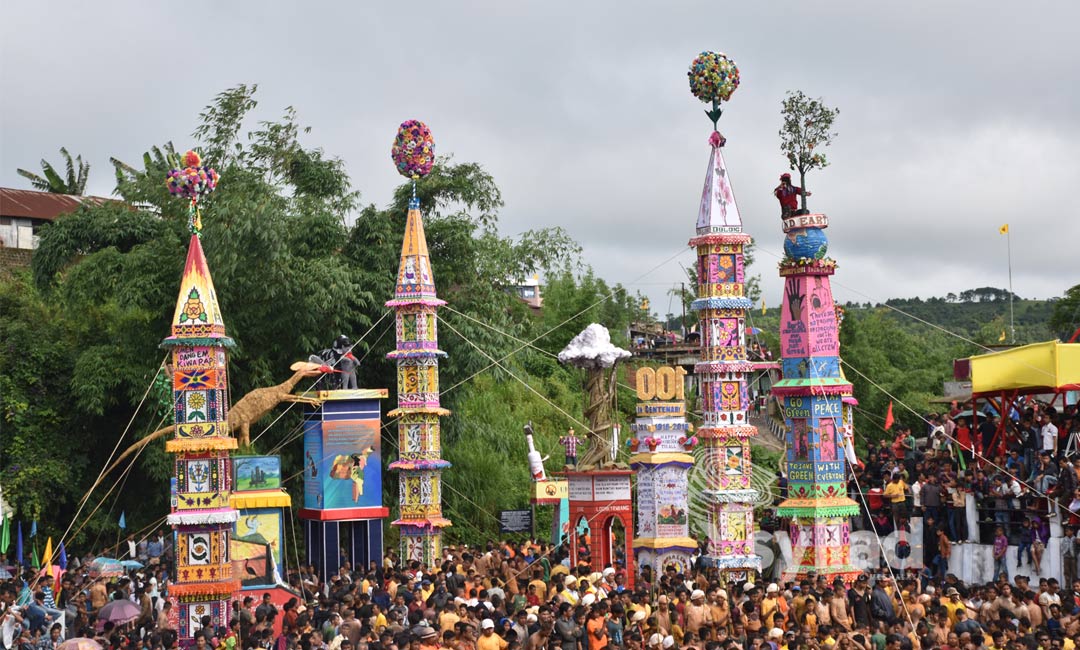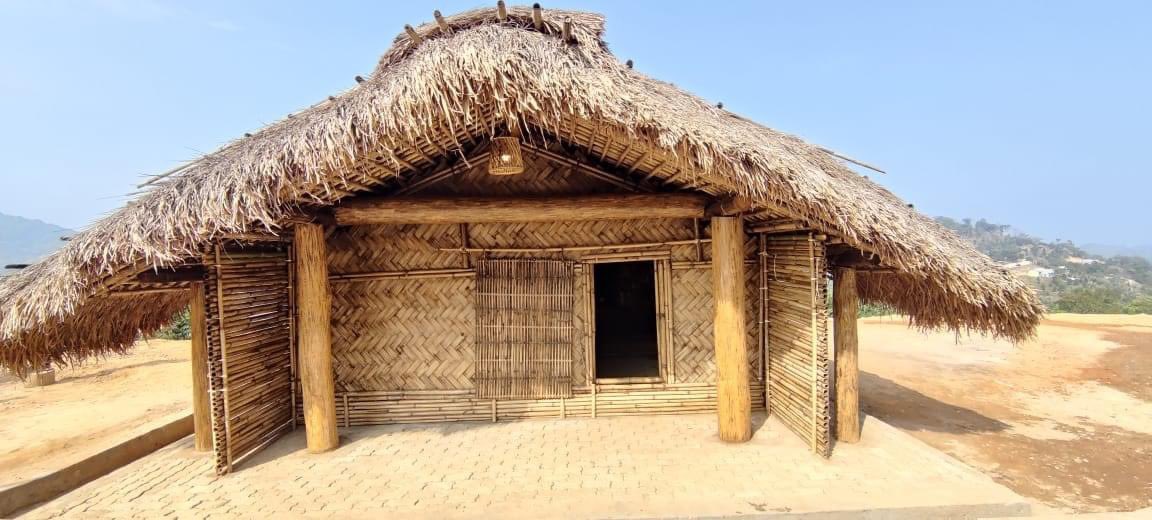By Dr. Bhupendra Kumar Sullere
The Echo of Culture
India’s diverse cultural fabric finds a vibrant thread in the tribal traditions of Northeast India, where indigenous communities have preserved their identity through unique values, customs, and festivals. One such significant celebration is Behdienkhlam, observed by the Pnar (Jaintia) tribe in the state of Meghalaya. More than just a religious ritual, it is a vibrant manifestation of agrarian hope, spiritual strength, community solidarity, and resistance against misfortune, disease, and natural calamities.
Historical Background: Legacy of Folk Beliefs and Nature Worship
The Pnar (Jaintia) tribe, a subgroup of the Khasi-Jaintia people, has for centuries followed a belief system rooted in nature and ancestral spirits. Behdienkhlam literally means “driving away evil spirits” – a symbolic cleansing of the community. This festival, traditionally held during the monsoon, was meant to ward off epidemics, famine, and spiritual afflictions.
It is intrinsically linked to the indigenous faith “Niamtre”.
The word "Behdien" refers to wooden sticks or planks, and "Khlam" means plague or evil.
Through rituals and offerings, it seeks to appease deities believed to control health and prosperity.
Ancient lore suggests that the community, faced with natural disasters and health crises, began performing these rituals as a way of invoking divine protection.
Structure of the Festival: Devotion, Strength, and Aesthetic Grandeur
Behdienkhlam is primarily celebrated in Jowai, located in the West Jaintia Hills district of Meghalaya, usually during July. The festival spans three days and includes both religious rites and public spectacles.
Main Features:
Holy Dip in Aitnar Pool – Symbolic cleansing to wash away evils.
‘Rots’ Procession – Massive, colorful, decorated wooden beams carried by groups of men and immersed in water at the end, symbolizing the banishment of evil.
Religious Rituals – Offerings and prayers are conducted by the Niamtre priests for health and blessings.
Datlawakor – A traditional football-like game played by young men from various villages, symbolizing unity, strength, and youthful energy.
Socio-Cultural Significance
Behdienkhlam is a platform for cultural expression, community integration, and spiritual reaffirmation.
It serves as a confluence of faith and heritage, reaffirming Jaintia identity and devotion.
It reflects the agrarian mindset – where prosperity, good harvest, and health are community concerns.
Rather than superstition, it is a form of cultural science, linking cleanliness, community rituals, and mental resilience against disease.
The festival is predominantly male-led, symbolizing traditional notions of strength and leadership, though women's roles, while limited in rituals, are crucial in community life.
Modern Context: Tradition Meets Tourism
Today, Behdienkhlam has also become a centerpiece of Meghalaya’s cultural tourism initiatives.
Local artists blend traditional dance with modern performance.
The Tourism Department actively promotes the festival to national and international visitors.
The event draws attention from photographers, researchers, and cultural enthusiasts worldwide.
However, modernity brings challenges:
A growing trend of superficial displays for tourists.
Cultural dilution due to external influence.
Diminishing religious commitment among the youth.
Contradictions and Discourse
Festivals like Behdienkhlam represent India’s pluralism and tribal identity, yet preserving their core requires deliberate action:
Protecting the role of local spiritual leaders.
Promoting cultural education and awareness among the youth.
Ensuring community-led tourism that respects tradition.
Encouraging sensitive media and state engagement.
An Expression of Dignified Identity
Behdienkhlam is not merely a ritual—it is the voice of the Jaintia soul. Through it, we witness a culture rooted in nature-worship, social cohesion, and spiritual consciousness. It stands as a shining cultural gem in India's diversity, one that must not be eroded by the winds of modernity, but rather, understood and preserved with deeper sensitivity.






